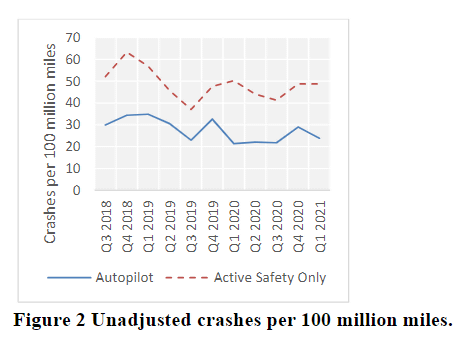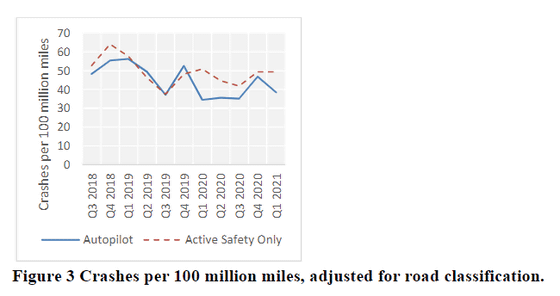Tesla's self-driving system is 'much more dangerous than claimed' by normalizing accident data

In October 2021, Noah Goodall, a researcher in intelligent transportation systems at the University of Virginia, published a paper entitled 'How to
View of A Methodology for Normalizing Safety Statistics of Partially Automated Vehicles
(PDF) https://engrxiv.org/preprint/view/1973/3986
You know how I've been saying since 2016 that Tesla's comparison of raw Autopilot crash data to average human driver crash data is deceptive because it doesn't adjust for the safety of the operating domain (among other factors)? @NoahGoodall proved it! https://t.co/j4QegxCYOp pic.twitter.com/bhK9Q0CdpK
— EW Niedermeyer (@Tweetermeyer) February 2, 2022
During the development of the autopilot function, electric vehicle maker Tesla has had several vehicle collisions and fatal occupants. Nonetheless, Tesla often claims that autopilots are safe, and in 2018 released a report that 'autopilots reduce accident rates by more than 70%.'
Tesla Model S burns out in a collision, killing two people, unmanned driver's seat-GIGAZINE

Tesla CEO Elon Musk has argued that the widespread use of the autopilot feature would 'save thousands of lives.' However, many people are suspicious of Mask CEO's claim, and Mr. Nidelmeier also thought that evaluation should be done using accurate data.
At that time, Goodall's paper was published. 'As the development of self-driving systems progresses, vehicle safety is becoming an increasingly important concern for regulators, but self-driving car accident rates are generally unique to manufacturers,' Goodall said in a paper. Since it is reported by the index of, the definition is inconsistent and it is difficult to compare. Therefore, in this research, the accident rate on public roads reported by a certain manufacturer's autonomous driving system is investigated and reported. We adjusted the accident rate based on the type of road and the demographics of the driver. '
For example, the graph below shows a simple comparison of accident data from the autopilot function released by Tesla with the accident rate of general drivers. The number of accidents (vertical axis) per 1 million miles (about 1.6 million km) is overwhelmingly higher for general drivers (red dotted line) than for the autopilot function (blue line). Using such data, Tesla claims that 'the spread of autopilot will help reduce car accidents.'

However, if you adjust the number of accidents based on the type of road, you will see different results. Accident data released by Tesla reveals that 93% of the 'total mileage of the autopilot' is on highways rather than on ordinary roads. On the other hand, the mileage on the highway accounts for only 28% of the 'total mileage of general drivers'. In addition, if the accident rate of the autopilot is calculated as the 'accident rate on the general road of the autopilot', the accident rate will increase by 2.01 times per mile (about 1.6km).
The following is a graph showing 'the number of accidents when the autopilot travels 72% on general roads and 28% on highways in 1 million miles' according to the accident data of general drivers. It is clear that the accident rate does not change much between autopilots and general drivers when the types of roads they drive are combined.

In response to this result, there are opinions on Hacker News such as 'This is exactly the way to lie on a graph .'
Related Posts:
in Vehicle, Posted by logu_ii







